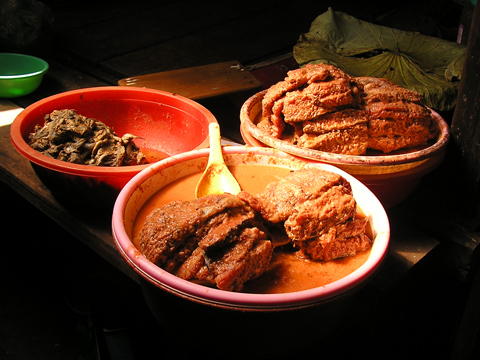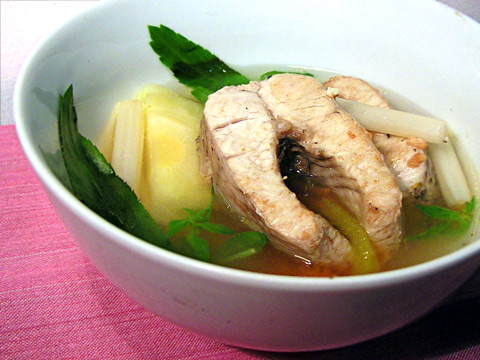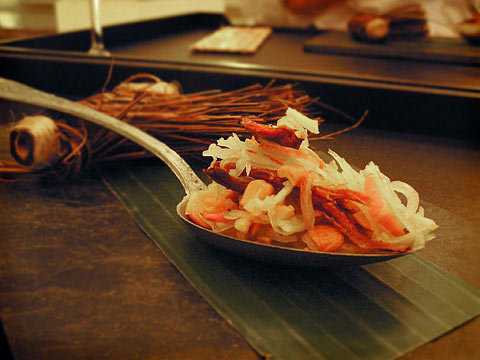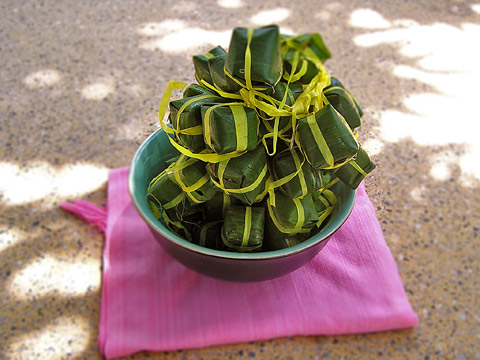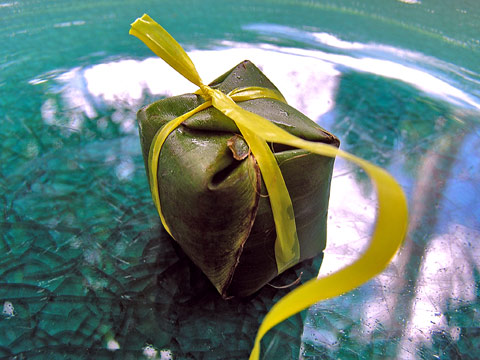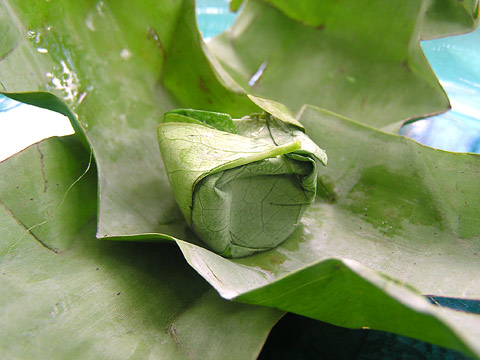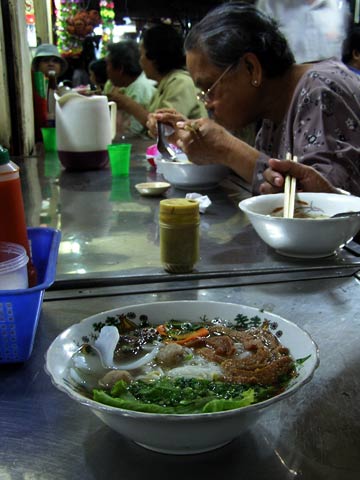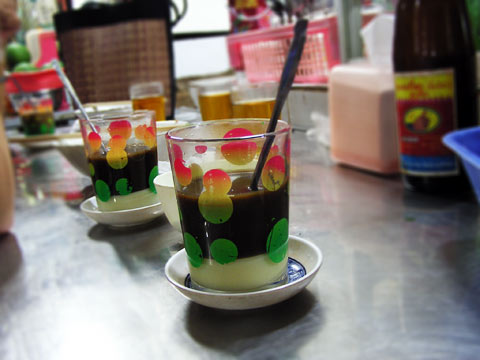It is no great secret that Cambodian food gets a bad wrap in the media. Most travel scribes are content with writing “it’s like Thai food but boring, except for fish amok” and leaving it at that. Here is where they go so atrociously wrong:
Ordering the wrong balance of things
A great Khmer meal isn’t necessarily about having each individual dish with balanced flavours, but having a whole spread of flavours and textures that form a balanced meal. When I first arrived and ate with a group of my Khmer workmates, they would order mostly the same things every time we ate: a sour soup, a curry, a fried fish, steamed rice (and when I was there, loc lac “American-style” because ‘that’s what foreigners like’). I never thought that we had any standout dishes but always ended up having a delicious meal.
The best of Khmer food is about balancing your meal as a whole. Where single Thai dishes might attempt to balance spicy, sour, sweet, salty (and occasionally, umami and bitter) in a single bowl, Khmer food goes about achieving the same balance through multiple dishes with diners themselves seeking gustatory equilibrium over the course of the meal.
Ordering the wrong meats.
If you happen to be cruising through the Cambodian countryside and see a cow to which your immediate reaction is “I’d like to eat a barely warmed slab of that”, my guess is that you have recently been on a heavy course of hallucinogens to deal with what your psychotherapist calls a “deep denial issue”. Cambodia is all about fish, pork, and in coastal areas, crustaceans. Chickens, cattle, goats, frogs and the weird meats of the forest are mostly subsidiary. Unless you’re at a Khmer BBQ place, try ordering three quarters fish/prawns/crab and one-quarter pig and you’ll be in for a treat.
Ordering no meats
There are a handful of great Khmer meat-free dishes (e.g. samlor karko sap; the ubiquitous stir fried morning glory/”water convolvus”) but they don’t maketh the meal. Although vegetarians are occasionally catered for by Khmer food, it isn’t a vegetarian cuisine as a whole. Most dishes try to heft the maximum amount of punch out of the minimum amount of meat, whether this is a spoonful of fermented fish or a few pork bones. When you remove this punch, there is often not much left but an anaemic broth full of MSG.
Familiarity
Practically every traveller that gets to Cambodia has come via Thailand or Vietnam. Most of these people have eaten Thai or Vietnamese prior to landing in South East Asia and thereby haven’t plunged headlong into the cuisine of either nation without a preconceived notion of what they enjoy in these foods and what they absolutely detest. When they hit Cambodia, everything is vaguely foreign.
The undeniable lure of weird meat journalism.
Whenever I read the “I went to Skuon and all I ate was lousy spiders” article in whatever foreign newspaper, the first thing that I think is that either: the author is too embarrassed to mention that they ate the rest of their meals at their hotel; or alternately, their editor thinks that their work is utter crap but needs a “fresh” angle to justify the Angkor junket. It’s true, Cambodians will eat practically any source of protein but for the most part, don’t subsist on weird meats unless it is out of sheer desperation. Every culture has their weird meat. Some Americans eat road-kill but it hardly characterises American cuisine. Nor does it get a mention every time that somebody reviews French Laundry.
Utopian expectations
When Anthony Bourdain came to Cambodia on the hunt for “the perfect meal”, he made a bee-line towards Pailin. If I was coming to Cambodia looking for some parasites to whom I could play the role of “fertile breeding ground” or possibly find out where the ex-Khmer Rouge are keeping the dream alive, I’d also head to Pailin. Admittedly, Bourdain confesses that his trip was ill advised. He was expecting Pailin to be the Indochinese equivalent of Reno, which it would be if Northern California had recently been involved in a prolonged guerrilla war with the genocidal regime from Nevada. Coming to Southeast Asia’s poorest nation and expecting it to be the lost culinary utopia is a little unwise. Cambodian food will eventually be revered like Thai or Vietnamese cuisine because most Cambodians who can afford to live more than a subsistence lifestyle are passionate about their nosh, but developmentally, Cambodia has a lot of catching up to do.
Somewhere in the early- to mid-1990s, a food meme surfaced that conflates poverty and authenticity. In Cambodia, this is revealed in the strange backpacker myth that street food is the best food because it is somehow a more “authentic experience” for the traveller than rocking up to BB World and stuffing their grimy, recently-bearded face with a BB Cambodia Burger. If you want to see what Cambodians love to eat, go to Pizza Company in Sorya Mall on a weekend. Trust me, they’re authentic Cambodians. Expecting that the food that the abject poor eat is going to be better or more “real” than the food that the slightly-less poor eat is insanity. Some street food here is excellent, but most of it is not. It is definitely worth shelling out an extra dollar to eat your meals somewhere better : even if it is a local, bones-and-napkins-on-floor joint : if you don’t have the time to dig for decent street vendors.
Addendum (18 August 2006): Loc lac (or sach ko loc lac) is marinated, cubed beef stir-fried with a soy sauce. It is usually served garnished with a single slice of tomato and raw onion on a lettuce leaf, and depending on your level of decadence, topped with a fried egg. Delicious lime juice, salt and pepper sauce (tuk meric) often comes on the side. The “American style” (also occasionally referred to as “French style” or in Khmer, sach ko loc lac barang) is served with a side of French fries. Vietnam has the similarly named “bo luc lac” and because I’ve heard the “that’s what foreigners like” mantra from a diverse range of Khmer people, I’ll hazard a guess that the French introduced the dish from Vietnam during the colonial era, rather than the Vietnamese popularising it in Cambodia at an earlier date. Cheers to Anonymous Emailer for calling me on an unfamiliar term.
